One of the first photo trips I ran on my own was along the California coast, back in 2016. Having taught Nikon Schools in the Bay area for over ten years, I’d had opportunities to explore the coast south of there with a friend who lives nearby, and found it offered much, much more than just a beautiful shoreline. Since then, however, each time I tried to plan a return, there were either major Highway 1 road closures or I had other work that conflicted with the timing. Finally, last month I was able to lead the trip once more. There were some challenges (remember those “Atmospheric Rivers” we kept hearing about all spring?), but once again it lived up to its billing as one of the most beautiful parts of America.
Here are some of the photos, and the stories behind them, from those five days with my group in early May. I’m hoping to run the trip again, probably in 2025, so let me know if you’re interested. And if you’d like to see more photos from this trip, the entire gallery is here.
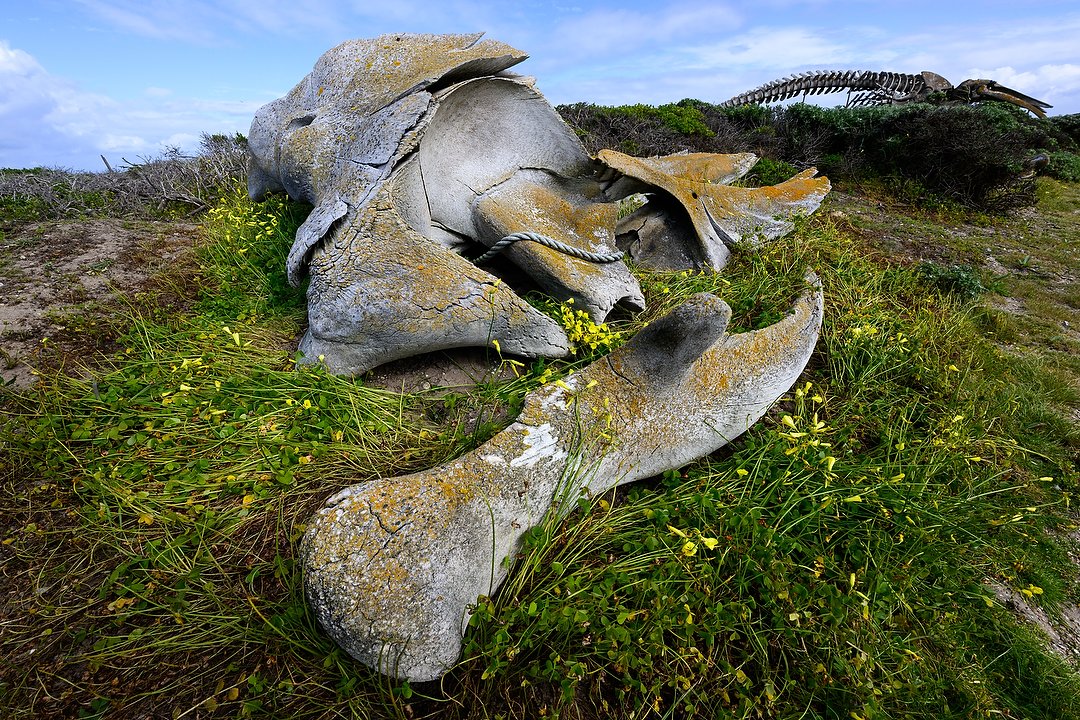
With the group flying into San Jose by early afternoon, we had time to check into our hotel and then go out and do a couple of shoots. This was one of the whale skeletons at the Seymour Marine Discovery Center in Santa Cruz. Nikon Z 9, Aperture Priority, Natural Auto white balance, ISO 200, 1/250 at f/14 in Matrix metering, -1.0 EV, Nikkor Z 14-24mm f/2.8 S lens at 14mm.
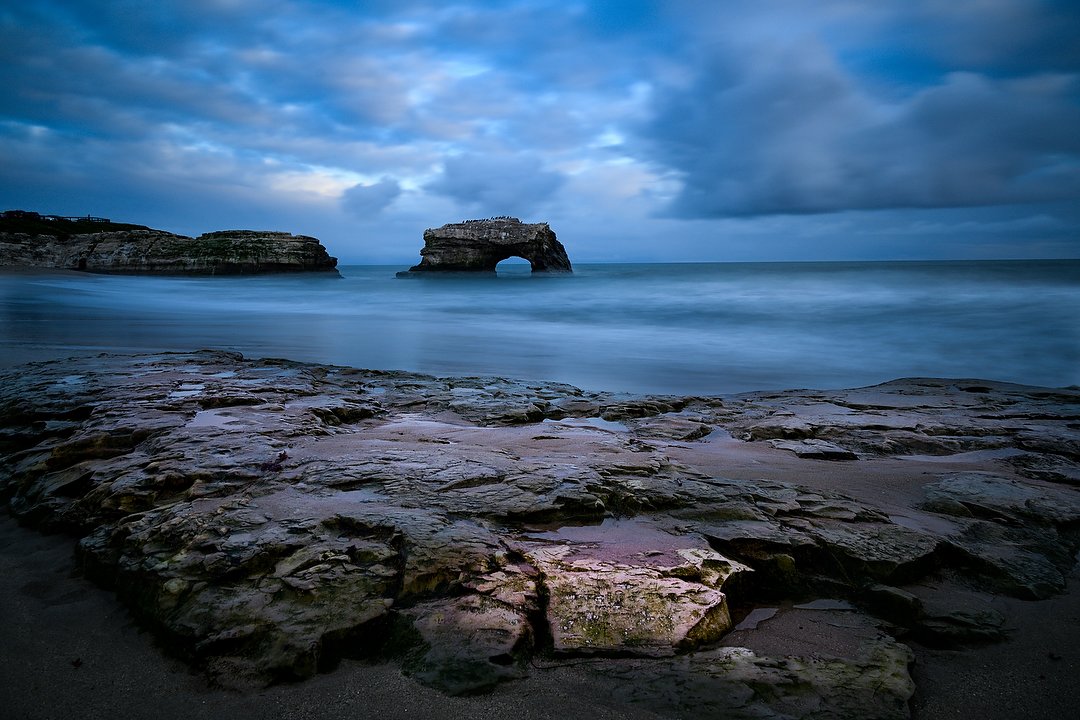
After dinner that first evening, we stopped by Natural Bridges State Marine Reserve for sunset. Not much happening in the way of a sunset, so I showed some of the group how you could use flash to light a foreground, even with an ND filter on the lens to create motion blur in the water. Nikon Z 9, Manual exposure, Natural Auto white balance, ISO 200, 13-seconds at f/8, Nikkor Z 24-200mm f/4-6.3 VR lens at 26mm.
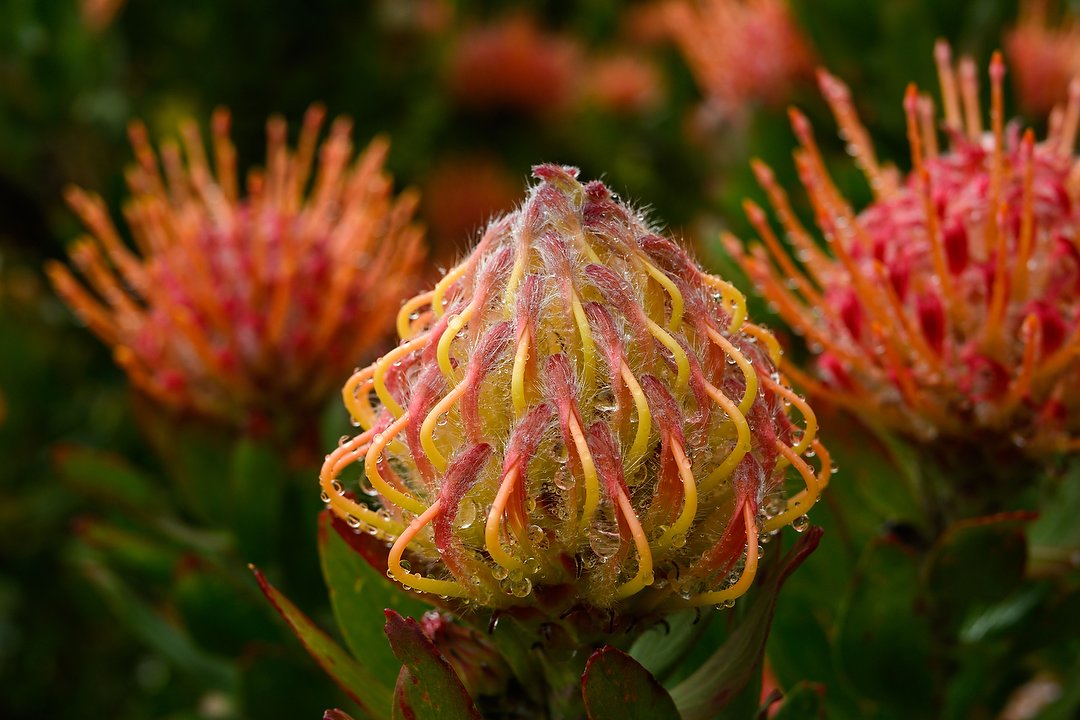
The start to our first full day was as the UCSC arboretum, where a morning rain shower let us work with water droplets and diffused light. Nikon Z 9, Aperture Priority, Natural Auto white balance, ISO 400, 1/500 at f/8 in Matrix metering, +0.3 EV, Nikkor Z 40mm f/2 lens with an extension tube attached to allow for close-up photography.
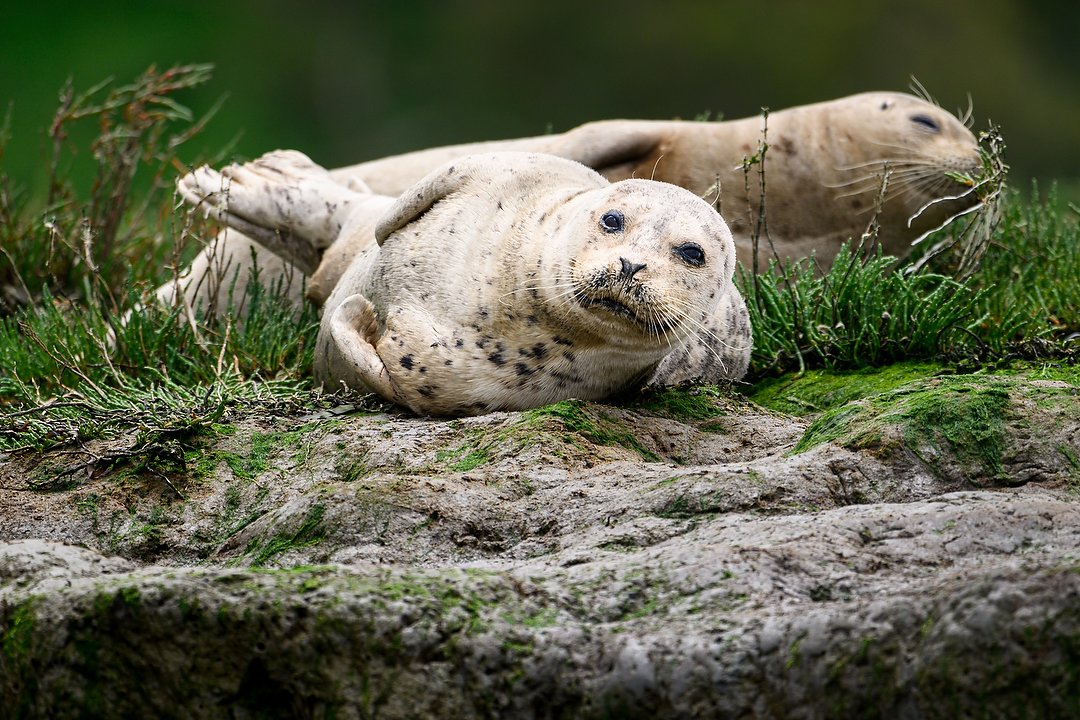
Early afternoon that first day found us at Moss Landing for a “whisperboat” (small electric boat) tour of Elkhorn Slough. Loads of wildlife there to photograph (see above and below), from seals to birds to sea otters, so we had fun with that for a couple of hours. Nikon Z 9, Aperture Priority, Natural Auto white balance, ISO 400, 1/800 at f/6.3 in Matrix metering, +0.3 EV, Nikkor Z 400mm f/4.5 VR S Z with TC-1.4x teleconverter for 560mm.
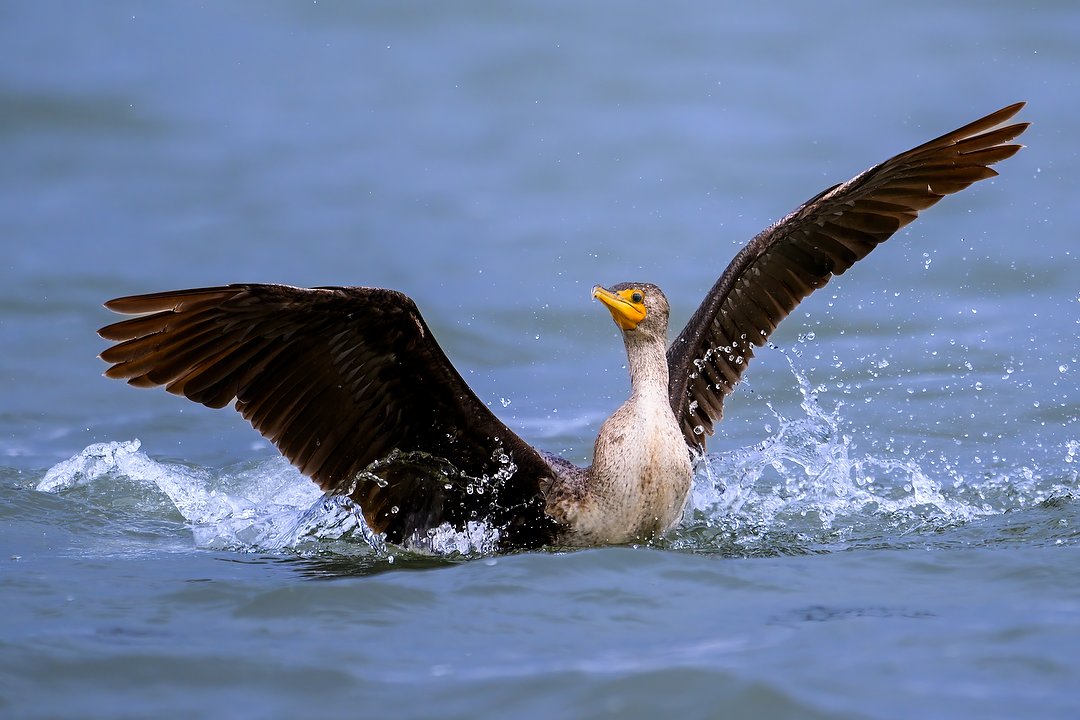
Nikon Z 9, Aperture Priority, Natural Auto white balance, ISO 640, 1/1250 at f/6.3 in Matrix metering, +0.3 EV, Nikkor Z 400mm f/4.5 VR S Z with TC-1.4x teleconverter for 560mm.
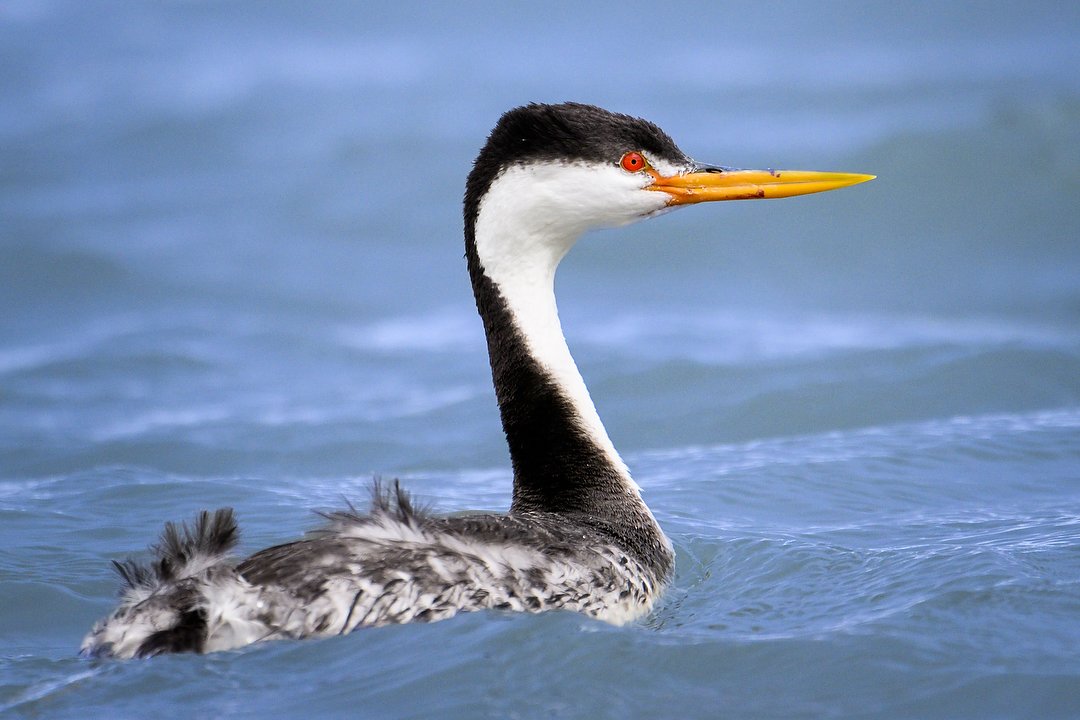
Nikon Z 9, Aperture Priority, Natural Auto white balance, ISO 640, 1/1600 at f/6.3 in Matrix metering, +0.3 EV, Nikkor Z 400mm f/4.5 VR S Z with TC-1.4x teleconverter for 560mm.
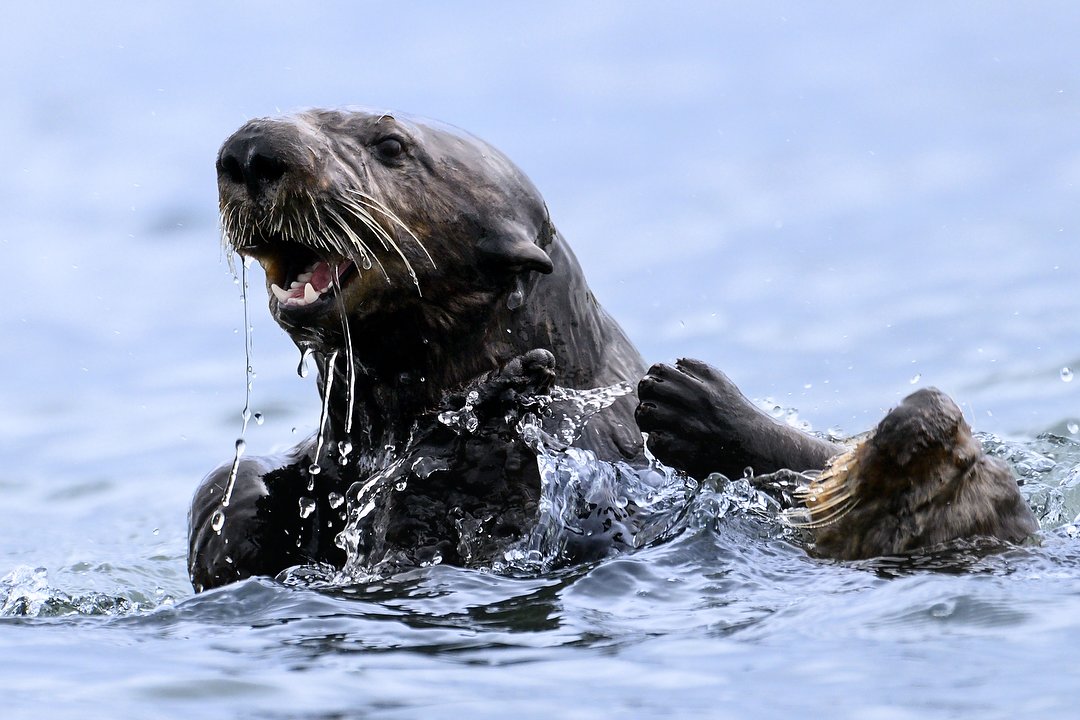
Nikon Z 9, Aperture Priority, Natural Auto white balance, ISO 400, 1/800 at f/6.3 in Matrix metering, +0.7 EV, Nikkor Z 400mm f/4.5 VR S Z with TC-1.4x teleconverter for 560mm.
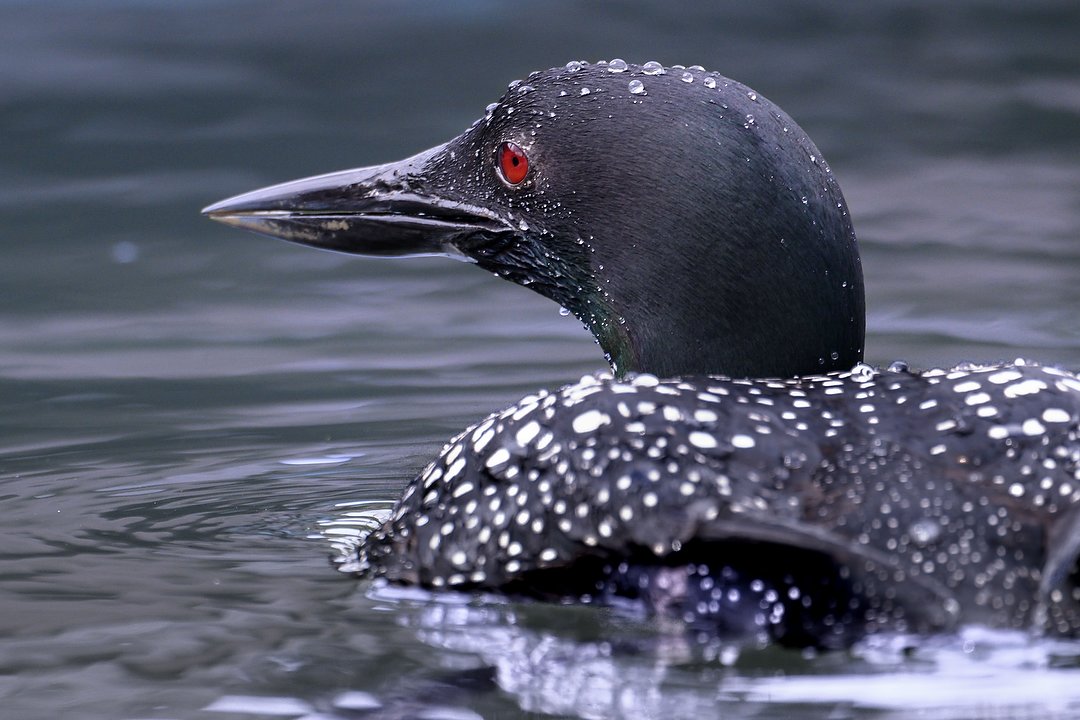
Nikon Z 9, Aperture Priority, Natural Auto white balance, ISO 640, 1/500 at f/6.3 in Matrix metering, +0.3 EV, Nikkor Z 400mm f/4.5 VR S Z with TC-1.4x teleconverter for 560mm.
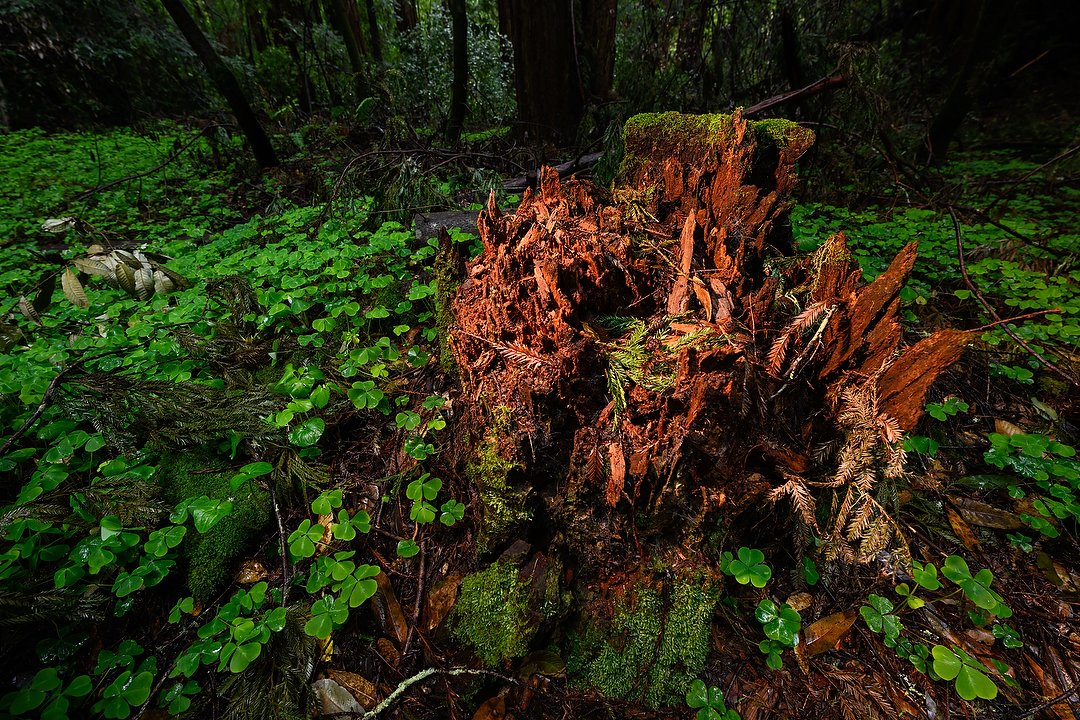
The first stop on the second day was at Henry Cowell Redwoods State Park. For this photo I used my flash, held off to the left, to add light to this redwood stump to help it stand out in the scene. Nikon Z 9, Aperture Priority, Natural Auto white balance, =, ISO 200, 1/40 at f/5.6 in Matrix metering, -1.3 EV, Nikkor Z 14-24mm f/2.8 S lens at 15mm.
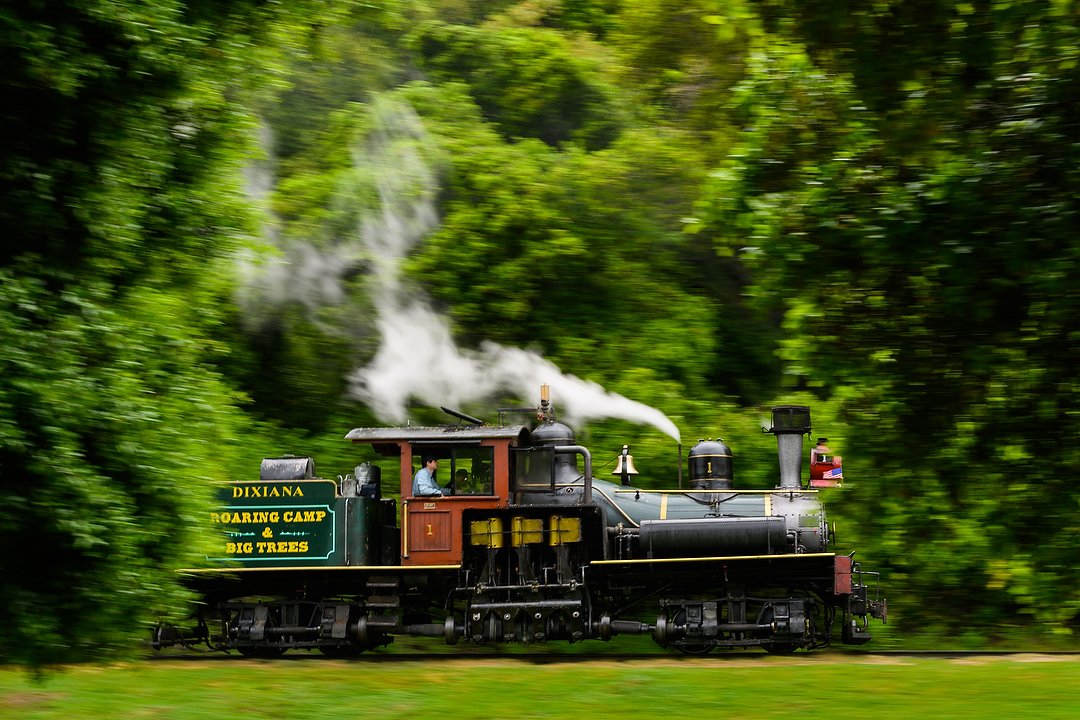
Roaring Camp (a re-creation of a late 1800s mining camp) is next door to the redwood forest. That meant just a short walk to visit it, and I timed our visit to coincide with one of the steam engine excursions they offer. To make this photo I forced a slow shutter speed and moved my camera to match the speed of the engine as it passed. That creates blur in the foreground and background, but not the subject. Nikon Z 9, Manual exposure, Natural Auto white balance, 5710K, ISO 64, 1/10 at f/16 in Matrix metering, -0.7 EV, Nikkor Z 24-200mm f/4-6.3 VR lens at 46mm.
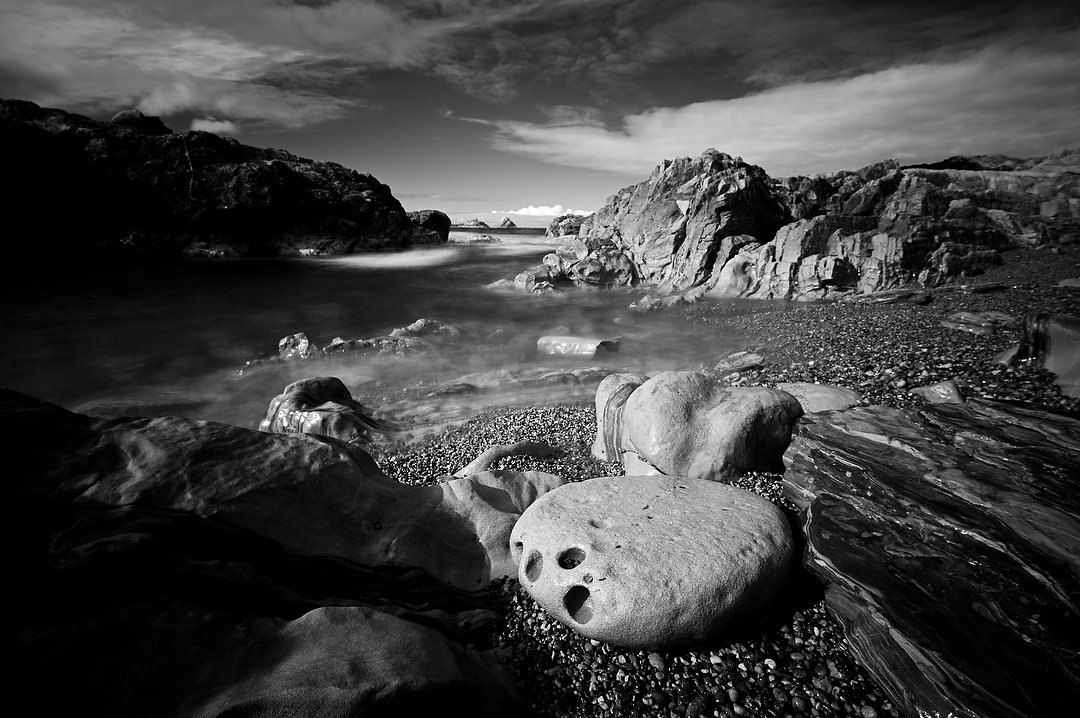 The next morning I had us at Point Lobos State Natural Reserve early, to be the first into the grounds. It offers some beautiful landscape opportunities, but has very limited parking. If you’re not there soon after they open, you may not get in. For this photo I used my Nikon Z 6, which has been converted to infrared. Aperture Priority, Preset white balance, ISO 200, 8 at f/14 in Matrix metering, +1.7 EV, Nikkor Z 14-30mm f/4 S lens at 15mm.[/caption]
The next morning I had us at Point Lobos State Natural Reserve early, to be the first into the grounds. It offers some beautiful landscape opportunities, but has very limited parking. If you’re not there soon after they open, you may not get in. For this photo I used my Nikon Z 6, which has been converted to infrared. Aperture Priority, Preset white balance, ISO 200, 8 at f/14 in Matrix metering, +1.7 EV, Nikkor Z 14-30mm f/4 S lens at 15mm.[/caption]
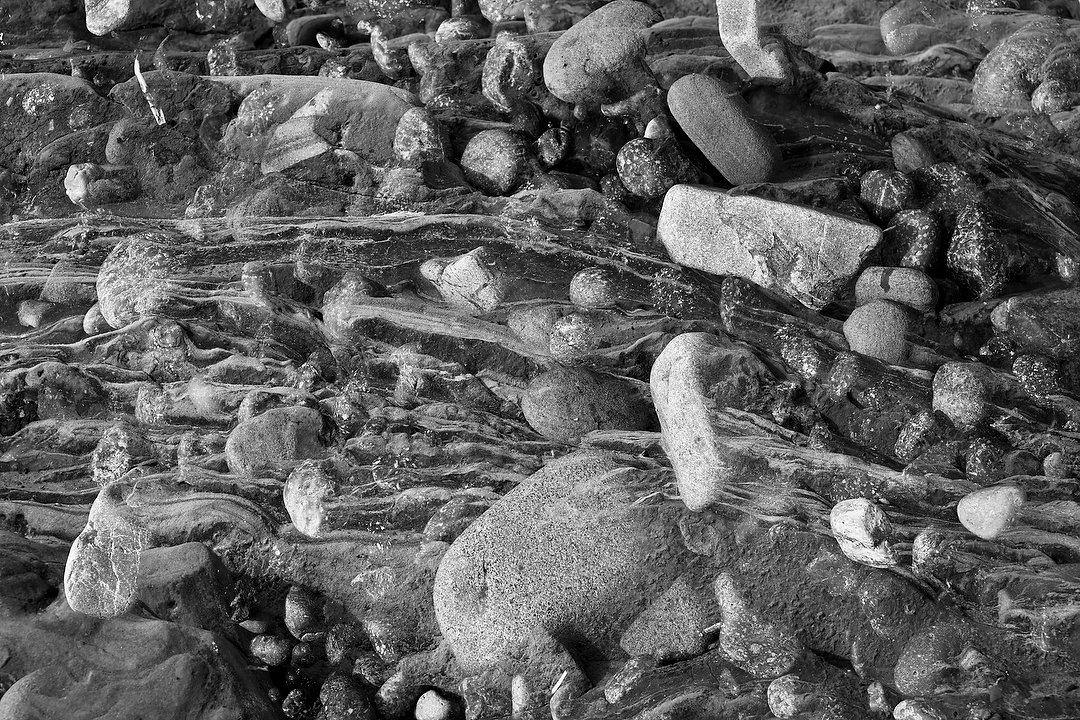
Also at Point Lobos, in this case I was using the Multiple Exposure feature of my camera to blend two photos together. One of moving water, and the second of rocks on the beach. Nikon Z 9, Aperture Priority, Natural Auto white balance, ISO 100, 1/80 at f/11 in Matrix metering, 0.0 EV, Nikkor Z 24-200mm f/4-6.3 VR lens at 85mm.
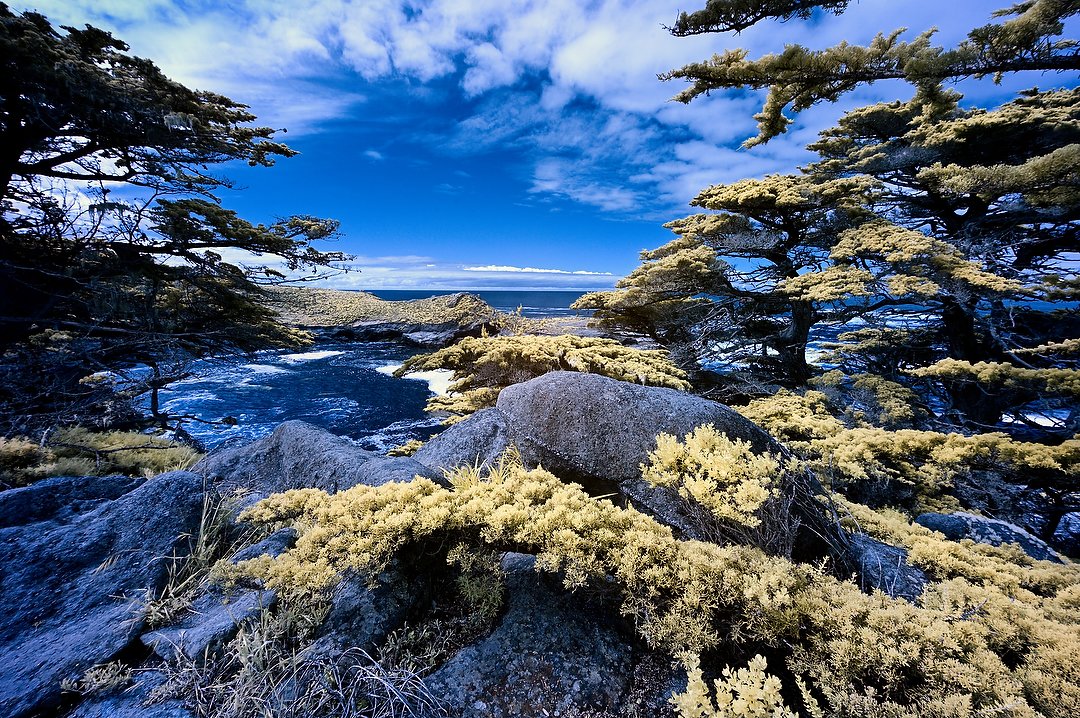
Still at Point Lobos, in this case using my Z 6 to create a “false color” infrared image. Aperture Priority, Preset white balance, ISO 200, 1/80 at f/16 in Matrix metering, +2.0 EV, Nikkor Z 14-30mm f/4 S lens at 15mm.
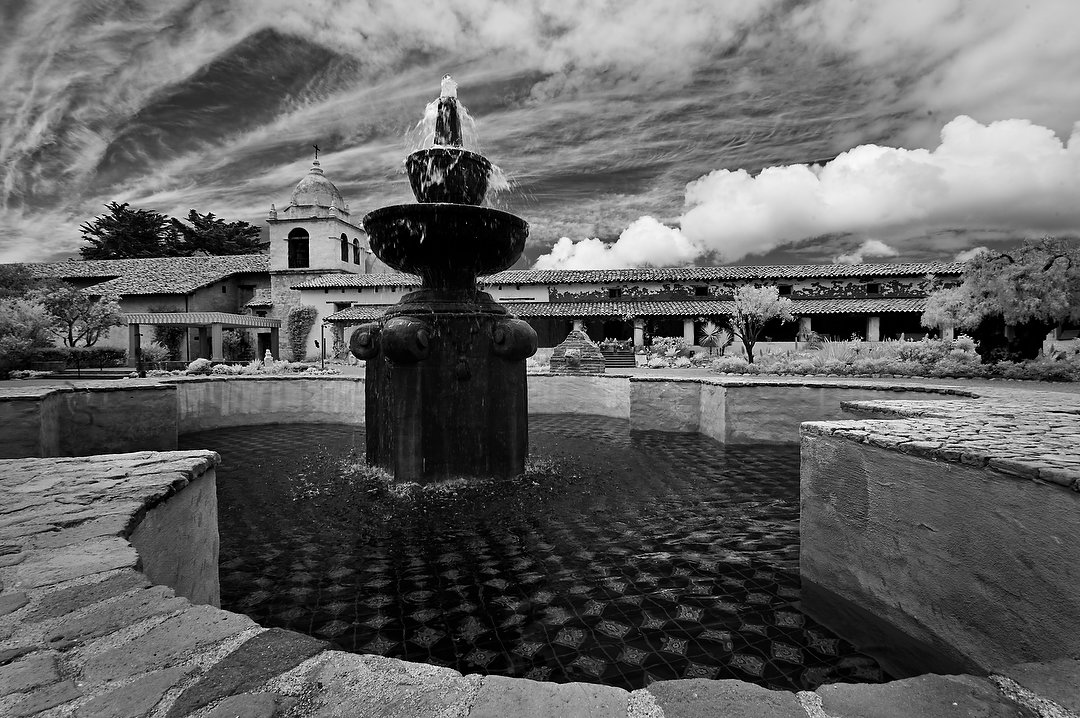
That afternoon we visited Carmel Mission. Dating from the late 1700s, I chose once more to use my infrared-converted Z 6 to take advantage of the old buildings and dramatic sky. Aperture Priority, Preset white balance, ISO 100, 1/60 at f/18 in Matrix metering, +1.7 EV, Nikkor Z 14-30mm f/4 S lens at 16mm.
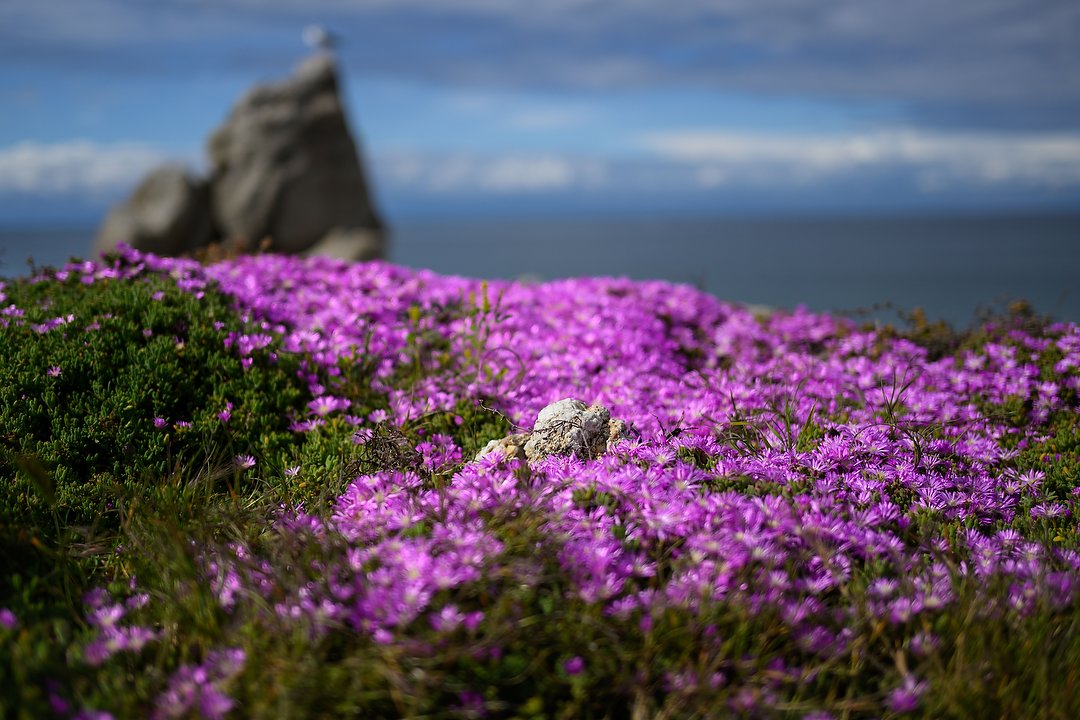
After the Mission we explored a park that stretches along the shore in Pacific Grove. For this photo I decided to use my little Nikkor 40mm f/2 lens wide open, creating one thin area of sharpness with shallow depth of field. Nikon Z 9, Aperture Priority, Natural Auto white balance, ISO 64, 1/8000 at f/2 in Matrix metering, -0.7 EV, Nikkor Z 40mm f/2 lens.
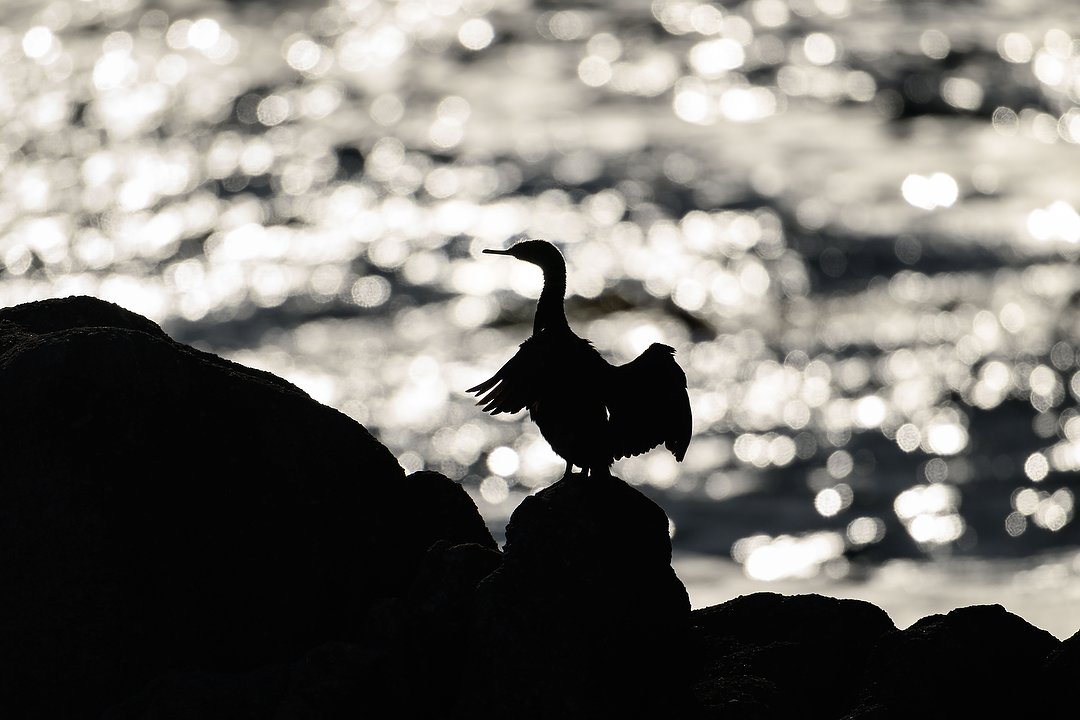
Further down that shoreline we found cormorants, and this one drying off in the late day sun. Nikon Z 9, Aperture Priority, Natural Auto white balance, ISO 250, 1/8000 at f/6.3 in Matrix metering, -0.3 EV, Nikkor Z 400mm f/4.5 VR S Z TC with 2X teleconverter for 560mm.
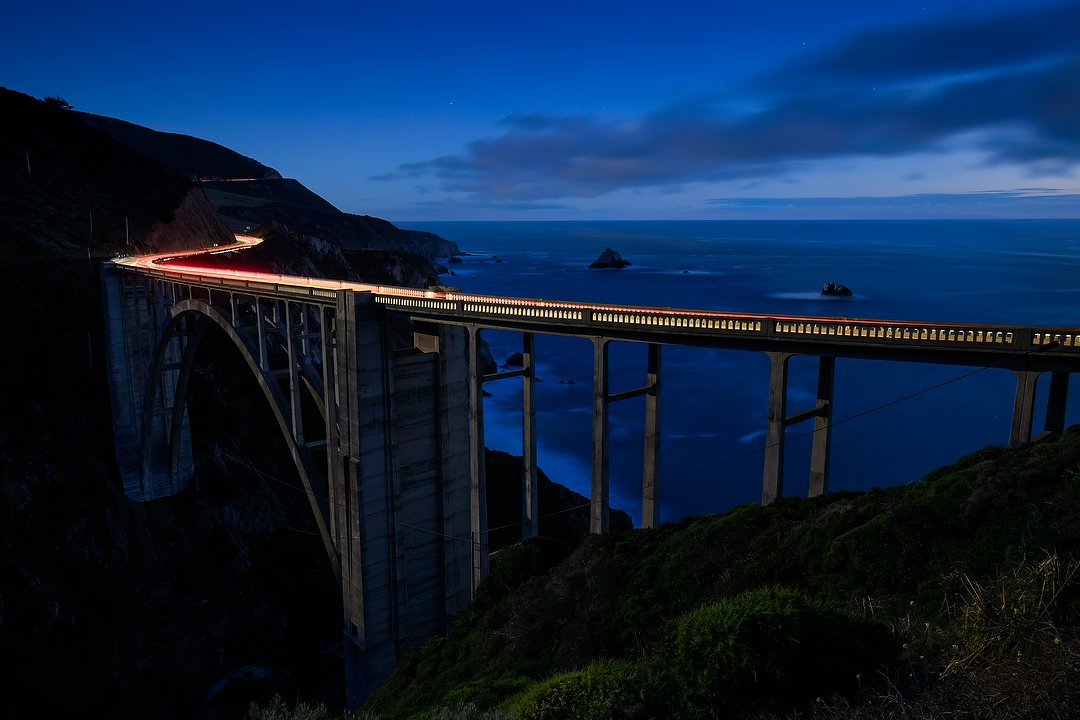
Our final shoot that day was at the classic Bixby Creek Bridge. The full moon rising on the left (outside the frame) added just enough illumination to light up the bridge supports. Nikon Z 9, Manual exposure, Sunny white balance, ISO 400, 30 at f/9 in Matrix metering, -1.7 EV, Nikkor Z 24-200mm f/4-6.3 VR lens at 24mm.
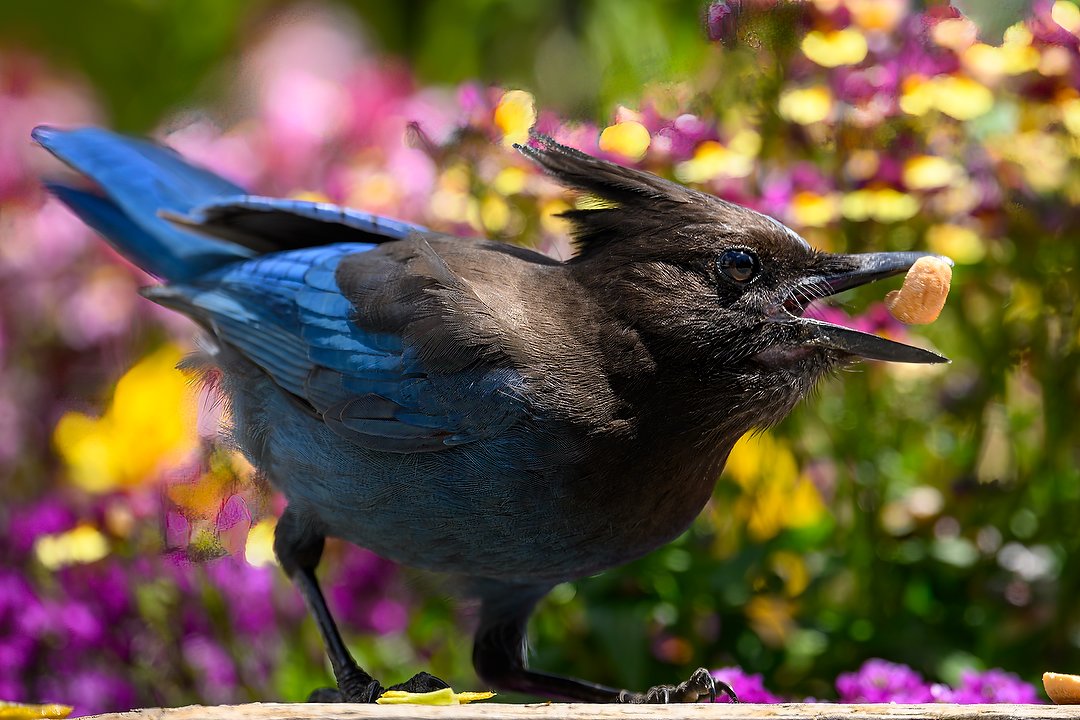
For our fifth and final day, we worked our way down California Highway 1, where this steller’s jay put on a show for us as we ate lunch outside. Nikon Z 9, Aperture Priority, Sunny white balance, ISO 250, 1/1000 at f/4.5 in Matrix metering, 0.0 EV, Nikkor Z 400mm f/4.5 VR S lens.
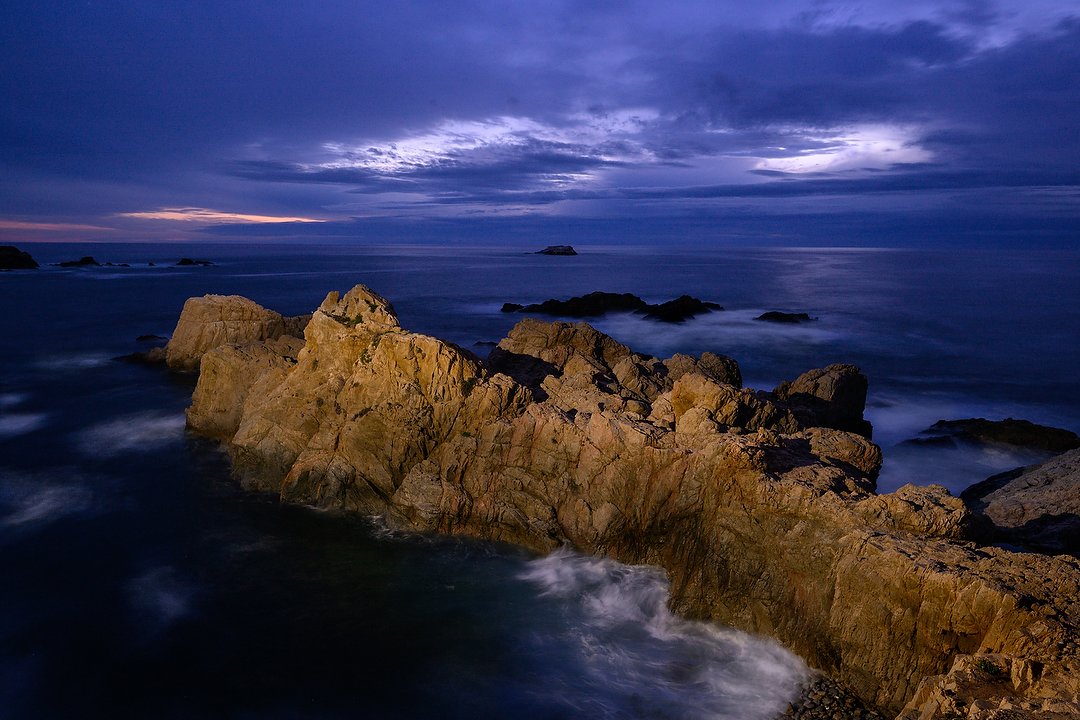
We visited Garrapata State Park in the morning then once again at sunset. As light faded from the sky, I used a small flashlight to light paint this spine of rocks stretching out into the water. Nikon Z 9, Manual exposure, Sunny white balance, ISO 400, 13-seconds at f/5.6 in Matrix metering, -1.0 EV, Nikkor Z 14-24mm f/2.8 S lens at 24mm.
(If you like this story, please share it with your friends and let them know about the links on photography that I post on my business Facebook page. I’m also on Instagram and Twitter, @reedhoffmann. And if you’re curious about the workshops I teach, you can find them here. And, you can subscribe to this blog on my home page.)

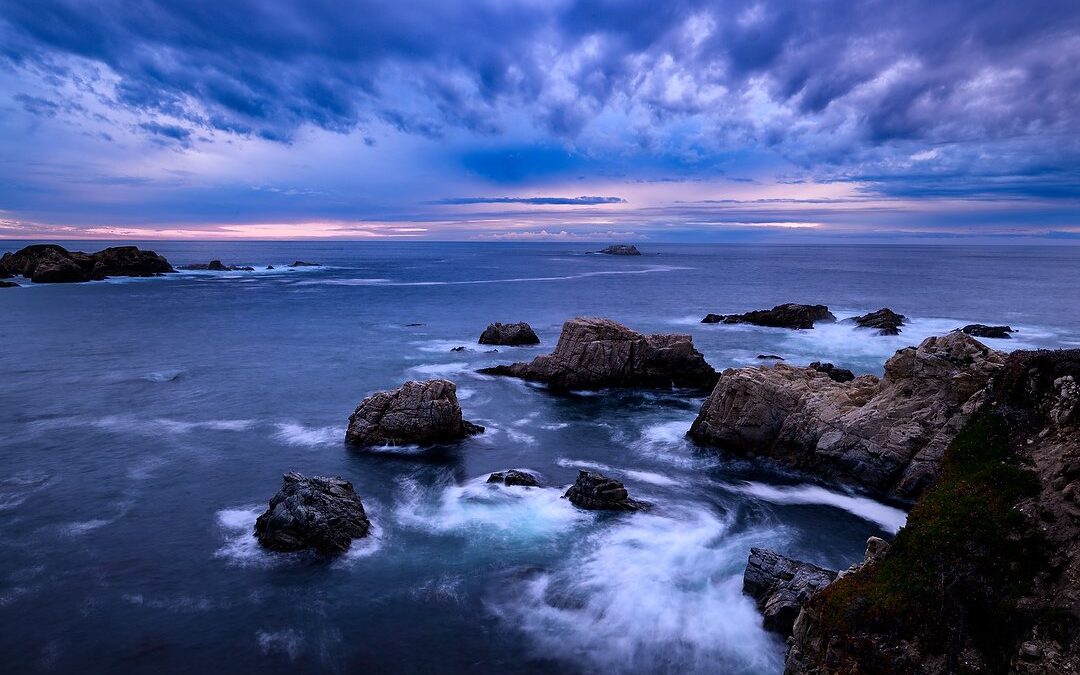
Thanks Reed. Wonderful Images!